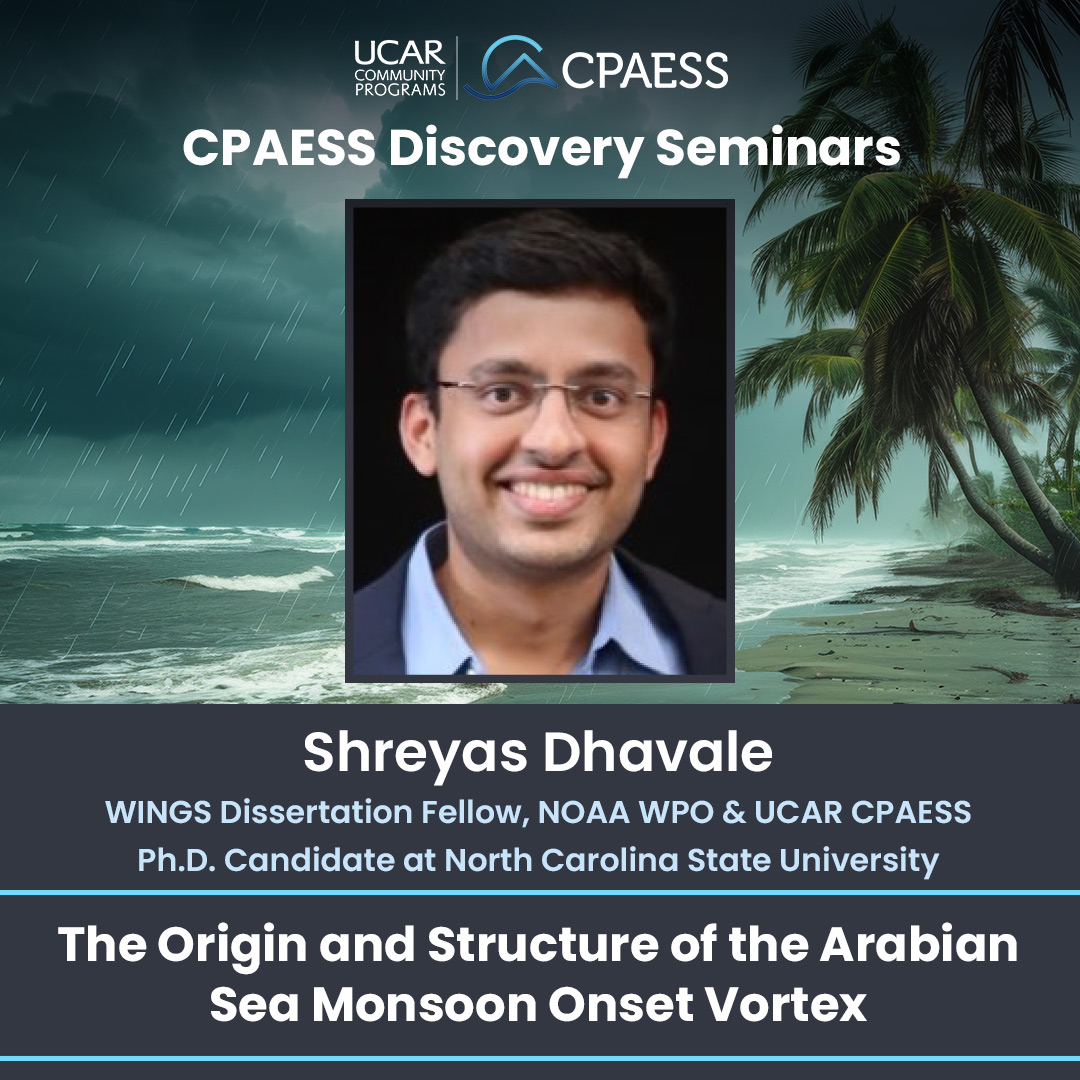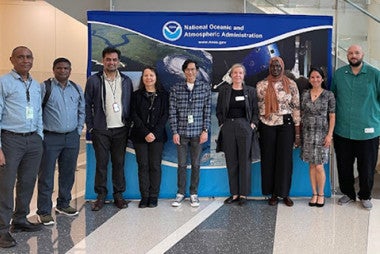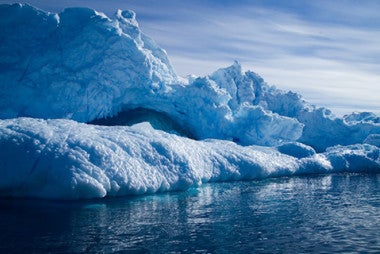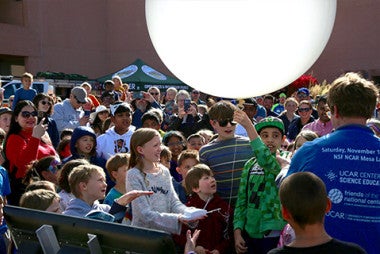September CPAESS Discovery Seminar: The Origin and Structure of the Arabian Sea Monsoon Onset Vortex
Please join CPAESS for a virtual seminar talk with Shreyas Dhavale, WINGS Dissertation Fellow (NOAA WPO and UCAR CPAESS) and Ph.D. Candidate at North Carolina State University

Title: The Origin and Structure of the Arabian Sea Monsoon Onset Vortex
When: Wednesday, September 18, 2024
11:00 AM MT (Virtual)
Add this event to your google calendar
About Shreyas Dhavale
Shreyas Dhavale is a recipient of the NOAA Weather Program Office Innovation for Next Generation Scientists (WINGS) Fellowship and a PhD Candidate at the Department of Marine, Earth, and Atmospheric Sciences at North Carolina State University.
His PhD research is on the 'Monsoon Onset Vortex (MOV),' which is a synoptic weather system that forms in the Arabian Sea in some years during the onset of the Indian Summer Monsoon. He studies the origin, structure, and predictability of the MOV in the Reanalysis data, Satellite observations, and numerical models such as WRF and UFS.
Shreyas is also a recipient of the 2024 John S. Irwin Award for Scientific Excellence from the Department of Marine, Earth, and Atmospheric Sciences at North Carolina State University.
Description
In certain years, during the onset of the Indian Summer Monsoon, a synoptic scale vortex, known as the Monsoon onset vortex (MOV) forms in the Arabian Sea within the seasonal northward propagating region of precipitating convection. Many MOVs intensify into tropical cyclones and significantly impact the onset and advance of the Monsoon.
Past studies have highlighted the role of hydrodynamic instability of the Somali Jet in the formation of the MOV. However, the role of precipitating moist convection in MOV formation remains unexplored.
This study examines the composite of 23 past MOVs using reanalysis data. Vertical alignment of a low-level and a mid-level vortex is found to be the most common pathway to MOV formation. A potential vorticity budget is used to clarify the leading physical processes during the MOV formation stage. It shows that the observed structure of the MOV is governed by diabatic heating and vertical advection to a leading order. Both the low and mid-level vortices in the developing MOV are attributed to moist convection.
View the flyer
Watch the live broadcast.
All participants will access the seminar via the webcast link and utilize Slido during the seminar for questions.
The talk will be recorded and published on the CPAESS YouTube Channel.
Questions? Contact Dawn Mullally









